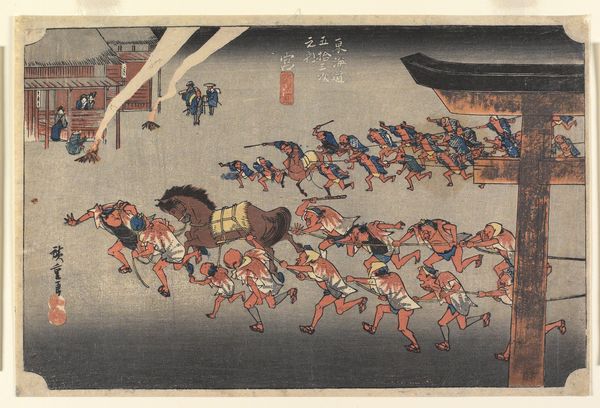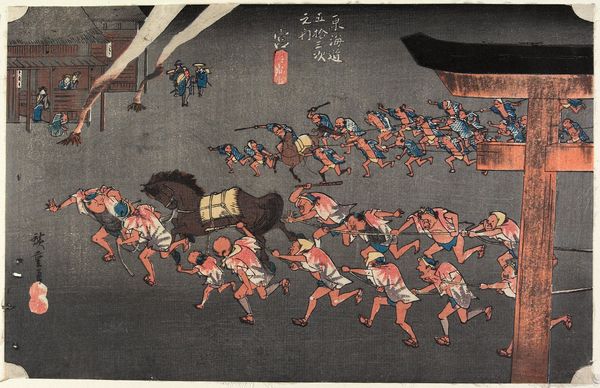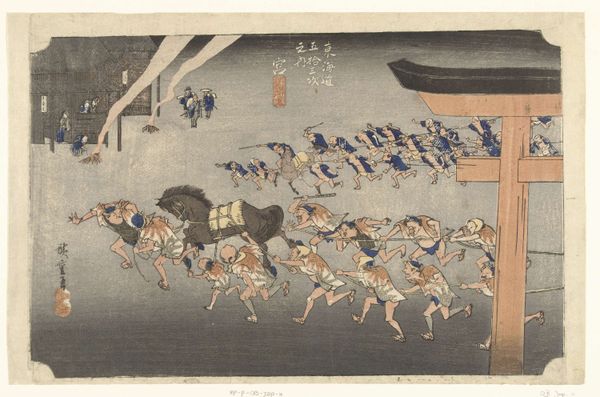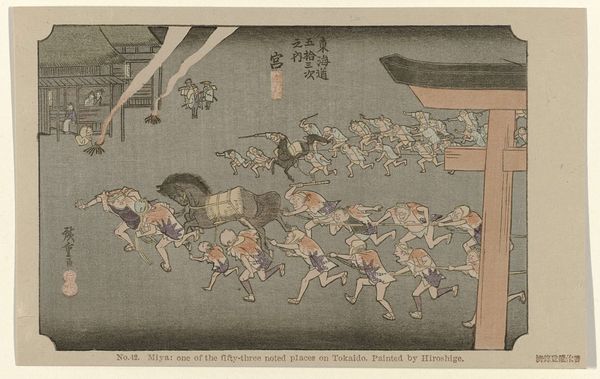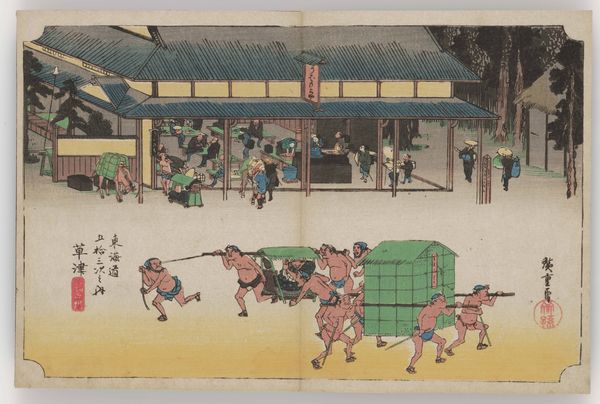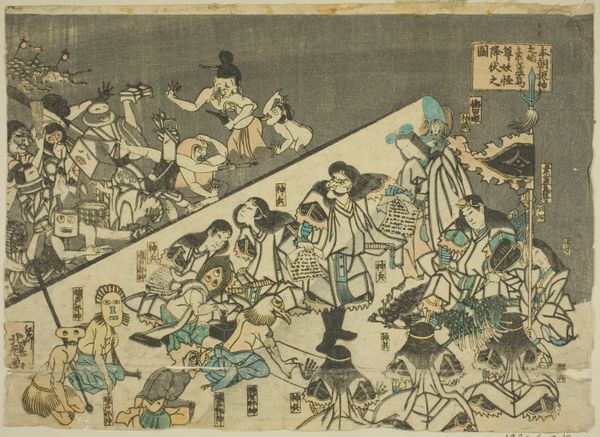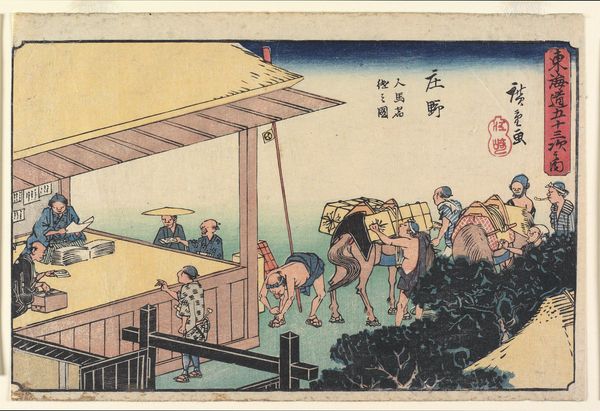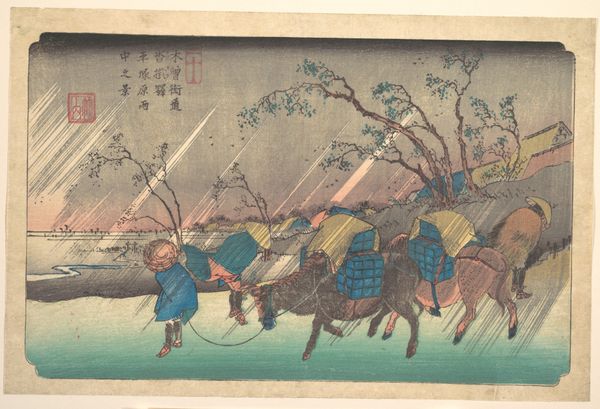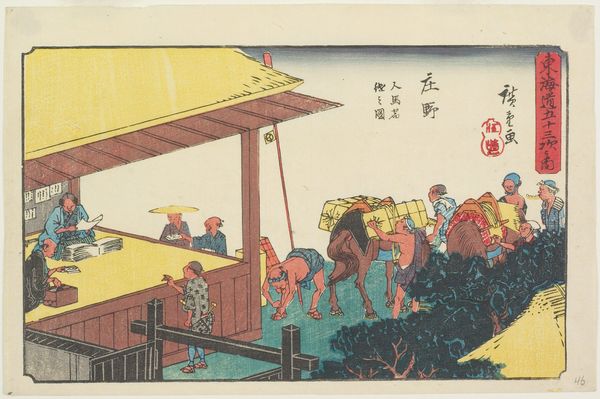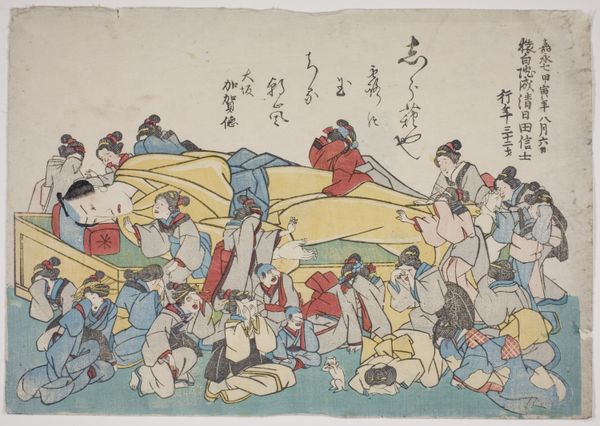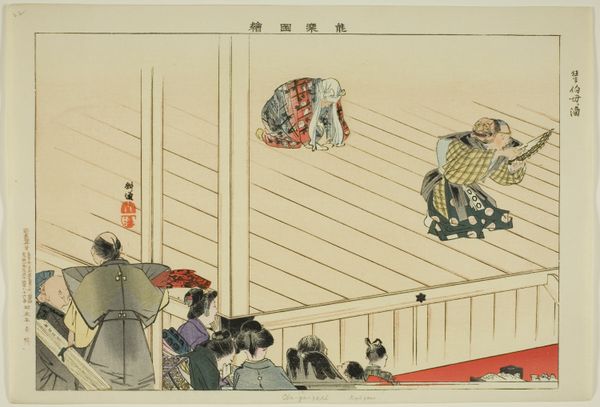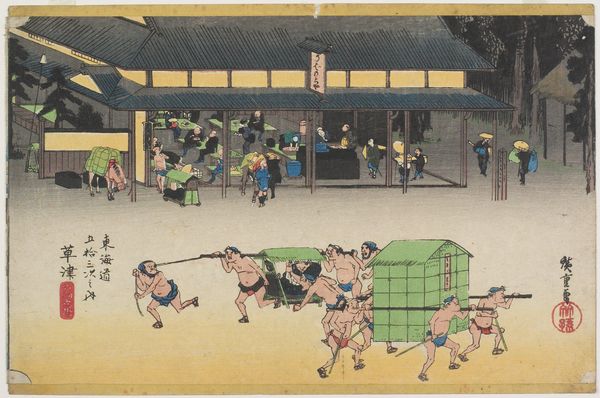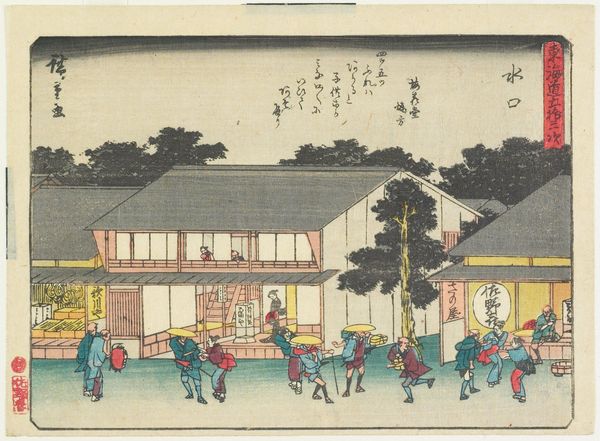
tempera, print, ink, woodblock-print, woodcut
#
tempera
# print
#
asian-art
#
landscape
#
ukiyo-e
#
japan
#
ink
#
woodblock-print
#
woodcut
#
history-painting
#
watercolor
Dimensions: 9 1/2 × 14 1/4 in. (24.13 × 36.2 cm) (sheet, horizontal ōban)
Copyright: Public Domain
Editor: This vibrant woodblock print, “Miya—Festival at Atsuta Shrine,” made by Utagawa Hiroshige around 1832, absolutely explodes with energy! The lines of people pulling something—is it a horse?–toward a torii gate create such a sense of forward momentum. What cultural narratives are embedded within this piece? Curator: Absolutely. The dynamism you perceive isn’t merely aesthetic. Consider the torii: It's a potent symbol, demarcating the entrance to sacred space. This print captures not just a festival but a ritual procession, likely carrying a kami, a divine spirit, to or from the Atsuta Shrine. Notice how the participants are differentiated by dress, and their expressions as each engage in the ritual, conveying the act of physical effort towards transcendence. What emotions do you think are evoked in viewers observing this work of art? Editor: I definitely see the sacred aspect now, especially with the torii as a gateway. And while energetic, I also feel a sense of focused purpose among the figures, maybe reverence. The horse pulling looks more and more significant. Curator: The horse could be an offering, a symbolic stand-in in Shinto practice. Or maybe representative of wealth being pulled from the world into the temple? Think about how deeply ingrained Shinto was—and remains—in Japanese identity. Hiroshige isn’t just depicting a festival; he’s capturing the tangible enactment of faith, memory, and cultural identity. Does the placement of figures change what you observe? Editor: Definitely, placing people in different layers creates more emphasis on the narrative, rather than on them individually, which changes the experience for the viewer. This feels richer now that I have context. Curator: Yes! The image is more than it first seems, isn't it? We start to unpack not just what’s visible but what that imagery signifies across time and within cultural understanding. Editor: I see it as an unfolding history now. Thank you!
Comments
No comments
Be the first to comment and join the conversation on the ultimate creative platform.
